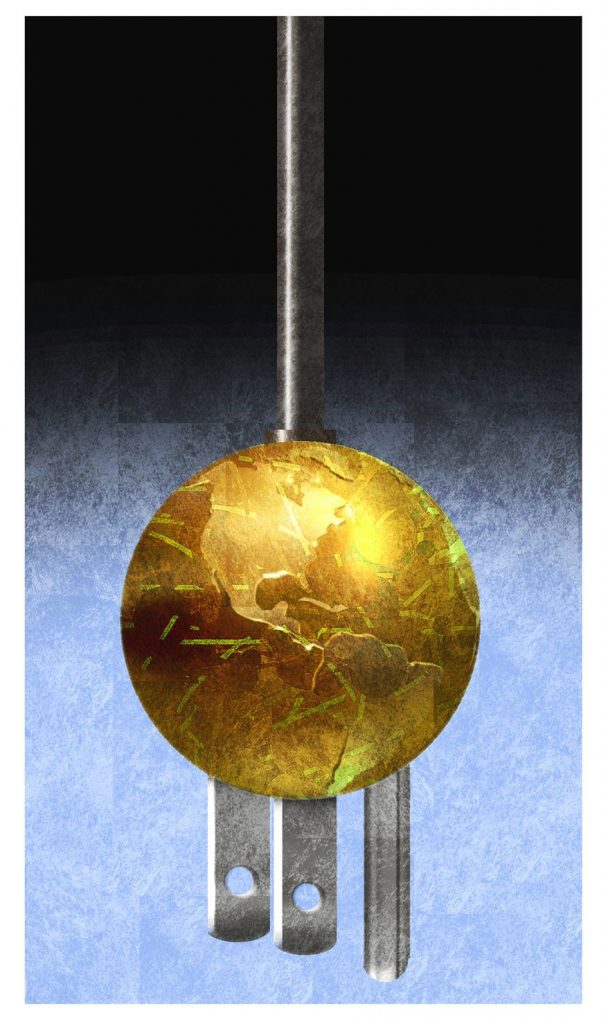The good news is that the world will be awash with clean and inexpensive energy; the bad news is that utopia may be up to a century off due to government drag. All too many people think you can just wish or legislate outcomes, such as “zero-carbon emissions by 2050,” while ignoring engineering, economic, political and legal realities.
Most of our electrical energy is likely to be produced by nuclear fusion, geothermal and existing hydro plants early in the next century. As it has for the past 150 years, the demand for electrical energy is almost certain to grow far faster than the population for the foreseeable future.
Last year, only 18% of overall global energy consumption came from carbon-free energy sources (i.e., nuclear, hydro, wind, solar and other), and most of that was from nuclear and hydro. Coal, natural gas and oil account for more than 80% of global energy consumption. So, to meet zero-carbon energy production by 2050 (as required by some of the current mandates), more than 80% of current production capacity would need to be replaced in the next 28 years, plus perhaps at least an equal amount of new production to meet electric car and other demands. This is not going to happen.
The share of global energy consumption from carbon-free sources has slowly grown over the last quarter of a century from 14% to the current 18%. To meet the zero-emission targets, that rate of growth would need to increase 20-fold or so, not counting new capacity. As the world has been learning, there are major problems with wind and solar — cost, reliability, etc. The Germans had tried to go totally green through this route, and now reality has struck. They have now stopped decommissioning their nuclear plants and are rapidly going back to coal-fired plants.
Again, the good news is that major breakthroughs have been made in fusion technology — to likely make it a reality within the next couple of decades — which will give the world almost unlimited, low-cost, safe power, with no waste problem. (The long-standing joke is that fusion is always 30 years off — now may be true.)
The other big breakthrough is geothermal. Some geothermal power plants have been around for a century or so in places where “hot rocks” are close to the surface. As most everyone knows, the earth’s core is molten rock, and the deeper you drill, the hotter it gets. There are places, usually with active volcanoes, like Iceland, where the hot rocks can be accessed easily with relatively shallow wells. Water injection in the wells can produce steam or super-heated water to power electric generation turbines. The problem is that these hot rock fields are relativity rare and often not in convenient places.
If it were possible to drill 12 kilometers, most places would be suitable for geothermal energy. With conventional drilling, the drill bits and necessary electronics degrade as the temperature rises in super deep wells, among other problems. However, engineers at MIT think that RF millimeter-wave sources could penetrate hard rock more than 10 times deeper than currently possible with mechanical drilling systems, faster and at a lower cost. They have developed devices (i.e., a gyrotron) that can put holes in hard rock. Field tests are slated to begin this next year. If it works, unlimited geothermal energy!
No one knows for certain which of these technologies (and others being studied) will prove to be economically viable, but the bet is that one or more will be — given the ability of people to endlessly innovate. In the meantime, there are already proven carbon-free technologies that are known to work and that should be used until fusion reactors come online. Nuclear power reactors have been safely and economically used for more than seven decades in stationary locations and in naval ships. Great advances have been made in reactor designs, making them much safer and meltdown-proof, more cost-effective and with far less waste.
These new designs are known as “Generation IV.” Despite design advances, the U.S. is still only using “Generation II” technology with its 93 commercial reactors (and another 100 or so naval reactors). China has 55 commercial reactors, including two Generation IV sodium-cooled fast reactors (SFRs), and is now building a small modular reactor (SMR). Russia has 35 Generation II operational commercial reactors. It has also deployed two SFRs on a floating nuclear power plant and is constructing a Generation IV plant. Despite being the early leader, the U.S. is falling behind.
There is great interest in building Generation IV SMRs and microreactors. These would be very safe and could be constructed quickly using a common design and components. They would be ideal to power remote defense and mining locations. Much electric power is lost in transmission, so distributed power networks using SMRs would increase network reliability and redundancy and reduce transmission costs.
Due to battery weight, electric airplanes are unlikely to be flown long distances. But low-cost electricity would greatly reduce the cost of producing hydrogen that could be used to power aircraft turbines.
There are almost unlimited economic and environmental benefits to inexpensive, clean, electric power. It will come sooner if government stops “trying to help” by smothering progress with excessive regulations and the legal/environmental cabal.
• Richard W. Rahn is chairman of the Institute for Global Economic Growth and MCon LLC.
https://www.washingtontimes.com/news/2022/aug/22/electrical-energy-future-incorporates-fusion-geoth/
© Copyright 2022 The Washington Times, LLC.
